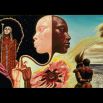Mati Klarwein, my father, was born in Hamburg in 1932 to Joseph Klarwein, (originally named Yusef Ben Menachem), a Polish-Jewish architect who’d studied at the Bauhaus, and Elsa Khune, a German opera singer. At the age of two Mati and his parents fled to Jerusalem.
As a child he always felt somewhat of an outsider, not really belonging to any of the social groups around him; he spent his time hiding the fact that he wasn’t circumcised and doodling in class while fantasizing about Hollywood imagery.
“I am only half German and only half Jewish with an Arab soul and an African heart.” This feeling of outcast only fed his desire for traveling and discovering new cultures. He adopted the Arab name ‘Abdul’ in front of his Hebrew name Mati to promote human unification.
After dropping out of school and enrolling at an artschool in Jerusalem, where he was given the job to camouflage Israeli military tanks, Mati and his mother decided to move to Paris in 1948.
Here he continued studying art at the ‘Academie Julian’ where his teacher, Fernand Léger, introduced him to the world of surrealism, Bunuel and Salvador Dalì. In Paris he also met Ernst Fuchs, the Austrian visionary painter, who taught him the ‘Mische technique’ of the old Flemish masters, a very time consuming oil on canvas process which delivered vibrant colors and long lasting results.
- During this Paris period, my father would escape much of his winters visiting warmer lands, while spending summers on the beaches of Ibiza and St. Tropez living off portrait commissions by day whilst dancing by night with the hip and intellectual crowd of the times; characters such as Brigitte Bardot, Boris Vian and the divine Dalì himself.
Mati moved to New York in the early 60’s, the energy of the big apple and the freedom of the new hippie movement became a clear influence on his style at that time. This is very visible in his piece ‘Annunciation’, used almost a decade later by Carlos Santana for the cover of his bestselling album ‘Abraxas’. The great LSD wave labeled him as a psychedelic painter, but his close friend Timothy Leary said that Mati painted psychedelics before even experiencing them!
His covers for Santana and Miles Davis projected his art and opened eyes around the globe, creating more commissions for portraits and album covers which provided him food and a roof, giving him time to slowly create his chapel of the undefined religion of everything: The Aleph Sanctuary, a 3x3m cube room made out of 69 paintings, all representing re-interpreted passages of the Bible.
The altarpiece was the ‘Crucifixion’, a large tree of life in which the leaves and fruit are represented by an orgy of black men and white women.
- This painting caused a stir as the chapel traveled through universities in the U.S., apparently causing arguments within some of the Black Panther movement and hate from other conservative whites, one of which showed up with an axe and threatened to destroy the piece.
But not all reactions from this chapel were negative; enlightened hipsters and artists glorified this surreal and spiritual hangout across the country. Andy Warhol and Miles Davis would pop by his studio in Union Square while Jimi Hendrix spent hours hypnotized by the detailed explosion of global cultures which danced together in each of the panels. Eventually this chapel was dismantled as he was forced to sell the paintings individually for economical reasons...
During a trip to Ibiza in his early 20’s, the boat from Barcelona was forced to stop at the port of Palma on the island of Majorca for a few days due to harsh weather conditions.
Mati remembered meeting an American archeologist in Paris called Bill Waldren who had told him he had moved to a small village on the northern cliffs of this island; having some time to kill he decided to visit this place… He never boarded back on the boat to Ibiza.
This was love at first sight. He returned to Majorca every summer, bringing with him his father, who had recently won a competition to build the Knesset, Israel’s parliament, to help him build a small house on the top of the village’s beach.
He later sold the house to finance a film he was making in Niger – which unfortunately was never finished, as a bad car accident in the Sahara ended the shoot half way through.Just to top it all, he had also turned down a show at the renowned Marlborough Gallery in London in favour of this film! Apparently he was the youngest artist they had offered such a show at the time – which may be the reason he was never asked to show in London again… But his impulsiveness and free spirit is what enriched him and made him such an admirable character.
In the early 80’s Mati made the Majorcan magical landscape his full time base. Until the day he decided to shoot off into space from his bed in the winter of 2002 — after giving Mother Earth a present of over 700 paintings, thanking her for a fulfilled life on this planet.
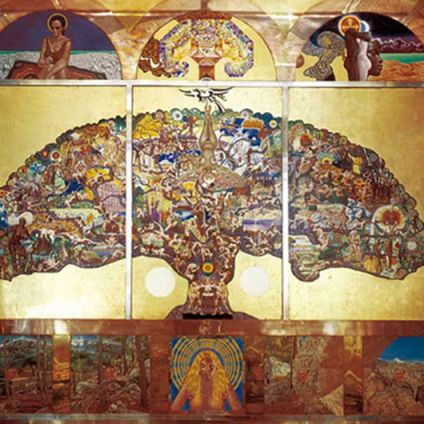 Annunciation, 1961, Mische Technique, 88 x 128.5cm - Mati Klarwein, courtesy Klarwein Family
">Crucifixion, 1963-65, Mische Technique, 150 x 300cm - Mati Klarwein, courtesy Klarwein Family
">Mati Klarwein in the Aleph Sanctuary - photo: Catherine Milinaire
">Bitches Brew, Mische Technique, 1970, 40 x 80cm - Mati Klarwein, courtesy Klarwein Family
">
Annunciation, 1961, Mische Technique, 88 x 128.5cm - Mati Klarwein, courtesy Klarwein Family
">Crucifixion, 1963-65, Mische Technique, 150 x 300cm - Mati Klarwein, courtesy Klarwein Family
">Mati Klarwein in the Aleph Sanctuary - photo: Catherine Milinaire
">Bitches Brew, Mische Technique, 1970, 40 x 80cm - Mati Klarwein, courtesy Klarwein Family
">Crucifixion, 1963-65, Mische Technique, 150 x 300cm - Mati Klarwein, courtesy Klarwein Family ">
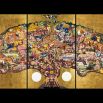 Annunciation, 1961, Mische Technique, 88 x 128.5cm - Mati Klarwein, courtesy Klarwein Family
">
Annunciation, 1961, Mische Technique, 88 x 128.5cm - Mati Klarwein, courtesy Klarwein Family
">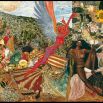 Photo of the Aleph Sanctuary - Mati Klarwein, courtesy Klarwein Family
">
Photo of the Aleph Sanctuary - Mati Klarwein, courtesy Klarwein Family
"> Mati Klarwein in the Aleph Sanctuary - photo: Catherine Milinaire
">
Mati Klarwein in the Aleph Sanctuary - photo: Catherine Milinaire
">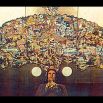
Bitches Brew, Mische Technique, 1970, 40 x 80cm - Mati Klarwein, courtesy Klarwein Family ">
